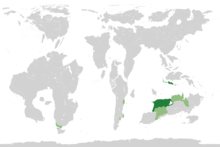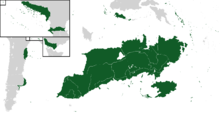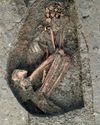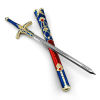Staynes
| This page is a work in progress by its author(s) and should not be considered final. |
| The Nine United Kingdoms of Staynes | ||||
|---|---|---|---|---|
|
||||
| Motto: In the depths of winter will you find sanative. | ||||
| Anthem: "Rise the Empire through Union" | ||||
Staynes and its dependencies in dark green, other Empire territories in light green.
|
||||
Regional Map showing Staynes
|
||||
| Capital and largest city | Sani Bursil | |||
| Official languages | (By first language) Staynish (Simplified) 60.7% |
|||
| Ethnic groups (2016) | 98.7% Human 1.2% Feline 0.1% unspecified |
|||
| Demonym | Staynes, Staynish, Staynic (rare) | |||
| Government | Unitary parliamentary Constitutional monarchy | |||
| - | High-King | Lambertus VII Constantine | ||
| - | Prince | Thadeus Galfridius Constantine | ||
| - | Prime minister | Walter Johannes | ||
| Legislature | Parliament | |||
| - | Upper house | Hikleme (House of Royals) | ||
| - | Lower house | Vikeoa (Peasants House) | ||
| Area | ||||
| - | Total | (n/a) km2 (n/a) sq mi |
||
| Population | ||||
| - | 2015 estimate | 160,384,000 (total) 147,653,120 (Staynes) 6,430,200 (Joralesia) 3,100,530 (Justelvard) 2,800,150 (Horales) 400,000 (Balidar and others) |
||
| - | 2011 census | 153,943,332 | ||
| - | Density | (n/a)/km2 (n/a)/sq mi |
||
| GDP (nominal) | 2016 estimate | |||
| - | Total | S♅6,937,708,383,001.6 | ||
| - | Per capita | S♅43,256.69 | ||
| Gini (2014) | 26.3 low |
|||
| HDI ((n/a)) | 0.8 high |
|||
| Currency | Staynish Kirib (S♅) |
|||
| Date format | DD/MM/YYYY | |||
| Drives on the | the left | |||
| ISO 3166 code | STA | |||
| Internet TLD | .sta | |||
Staynes, officially The Nine Kingdoms of Staynes or sometimes NUK (Nine United Kingdoms) is a unitary sovereign state and transcontinental country consisting of territory in northern Aurora and in many other areas. It shares land borders with Axdel to the south west, South Staynes and Ethalria to the south and Caltharus to the east. There are also four main oversea dependencies that make up the country. Staynish Justelvard which is in south east Yasteria and shares borders with Bertica and neighbours East Malaysia, Staynish Horales which is in Arcturia and shares borders with Spoontuis, Staynish Joralesia which is in south east Gondwana and shares its borders with Switzerland and a colony of Setzna, and finally Staynish Balidar which neighbours with a mining colony of Celennica. The nation and its dependencies are enveloped in several large notable bodies of water, the Packilvanian Ocean, Antarctic Ocean, the Northeast Pacific Ocean, the Gulf of Gondwana and the Caven Sea. Altogether, the population of Staynes and its dependencies is estimated at 160.4 million as of 2015 with Staynes itself estimated at 147.65 million.
Staynes is a Constitutional monarchy with a four-House parliament system. The current monarch is High-King Lambertus VII since his coronation on the 6th of June 1991 and the serving King of Horales is the heir apparent, Thadeus. The capital is Sani Bursil, a global city and financial centre with an urban area population of 48 million in 2015, making the city one of the largest populated cities in Urth. Other major urban areas in Staynes include Redrugus, Fort Vitrayn, Fort Staynes, Fort Bagrin, Fort Bersius and Fort Jubrayn whilst Sani Jural in Staynish Joralesia is also considered a major urban area.
Staynes is arguably one of the oldest standing nations in Aurora, originally as Morstaybishlia for 543 years until it unified with Caltharus under Lambertus III during the Battle for Caltharus in 1515 where it was renamed the Morstaybishlian Empire. The monarchy has been in existence since the King Pip united two tribes in 884 where Fort Jubrayn and its surrounding area is located. The Empire took complete control over Joralesia in the War of Joralesia 1716 - 1755 after a long bitter war with the inhabitants. Following The Auroran Imperial War, the Morstaybishlian Empire broke down, and was reclassified as the Staynish-Caltharus Empire, where Staynes has existed since the 11th of May 1970. The borders Staynes shares with other nations in Aurora has not changed in all of its existence before the war where they lost a great amount of land to the independence of South Staynes. On the 16th of December 2016, Staynes sent military intervention to Justelvard after its total government collapse, and after three days had succeeded to reclaim the former Morstaybishlian territory.
Staynes is a developed country and is considered to have a high-income economy and is categorised as high in the Human Development Index. There is a total GDP per capita of S♅43,256.69 in Staynes and its dependencies, which is considerably rich. Staynes has remained as a highly influential core country especially influencing events in Aurora. It is a recognised nuclear weapons state. Staynes is a member of the South East Pacific Coalition Forces, and a founding member of the Auroran Continental Assembly, as well as being one of the two founders of the Staynish-Caltharus Empire.
Contents
Name and identity
Staynes refers to the entire combined territory, whilst when talking about certain territories of Staynes, people tend to identify that landmass. For example, instead of referring to Staynish Justelvard as Staynes, it is identified as Staynish Justelvard or Justelvard. When people refer to the Auroran landmass Staynes, it is identified as Mainland Staynes, NUK, Nine United Kingdoms or informally "just Staynes".
Military
The Royal Staynish Armed Forces has been the Armed Forces unit of Staynes and Morstaybishlia throughout its history. It has seen many battles and wars in its 1062 years in existence, such as the Stand of Fifty, the battle led by King Pip that established the Armed Forces, and other examples such as the Battle for Caltharus 1515, the War of Joralesia 1716 - 1755, and most recently, The Auroran Imperial War. The Royal Staynish Armed Forces is centred in Xenliada, a military fortress which is two thirds the size of Redrugus; the city that it lies next to, which is the second largest city in Staynes. There is three branches of the Royal Staynish Armed Forces:
(WIP)
Government
(WIP)
Kirib
The Kirib is a multi-continental influential currency which spans across The East Pacific. The Kirib has origins dating back to King Gustav I, and historical documentation of the first phase Kirib in 1422 (1 year after the death of his father), originally referred to as the Morstaybishlian Kiribin, and shortened by Gustav I to the Morstaybishlian Kirib in 1429. It was later changed to the Kirib around 1893, following its influence in several nations, and changed into branches of the Kirib according to which nation you were from on the 30th July 1975, following the end of The Auroran Imperial War.
There's been many nations that have used the Kirib. The current holders of the Kirib are:
- Staynes (S♅)
- South Staynes (SS♅)
- Axdel (A♅)
- Caltharus (C♅)
- Tuvaltastan (T♅)
- Kostromastan (K♅)
- Tivot (TT♅)
- Spoontuis (SP♅)
- Emberwood Coast (E♅)
- Kaeliv (♅)
- Staynish Justelvard (J♅)
- Staynish Joralesia (SJ♅)
- Staynish Horales (SH♅)
The Kirib is not decimalized but there is heavy opposition to push a Kirib decimilization, which if allowed would take as much as 10 years to convert.
Values:
There is 10 values of the Kirib, from smallest to largest:
| Value | Status | Info | |
|---|---|---|---|
| ♅1 | In use | Lowest value. ½ of ♅2. Equivalent of (insert value) NSD | |
| ♅2 | In use | Second lowest value. Equivalent of (insert value) NSD | |
| ♅3 | In use | Third lowest value. Equivalent of (insert value) NSD | |
| ♅4 | Discontinued | Discontinued after system revamp no longer required ♅4. Equivalent of (insert value) NSD | |
| ♅5 | In use | Fourth lowest value. ½ of ♅10. Equivalent of (insert value) NSD | |
| ♅10 | In use | Sixth highest value. ½ of ♅20. Equivalent of (insert value) NSD | |
| ♅20 | In use | Fifth highest value. Equivalent of (insert value) NSD | |
| ♅30 | In use | Fourth highest value. Equivalent of (insert value) NSD | |
| ♅50 | In use | Third highest value. ½ of ♅100. Equivalent of (insert value) NSD | |
| ♅100 | In use | Second highest value. Equivalent of (insert value) NSD | |
| ♅200 | Discontinued | Discontinued after The Auroran Imperial War. Equivalent of (insert value) NSD | |
| ♅1,000,000 | In use | Highest used value. Equivalent of (insert value) NSD | |
| ♅1,000,000,000 | Discontinued | Discontinued after The Auroran Imperial War. Equivalent of (insert value) NSD |
History
Ancient Maltervenia
Ancient Maltervenia symbolises the time period from where the native inhabitants began to utilise the land around them until their tribal formations around 3000 years ago. It is not certain the exact time period that people began living in the lands of North Aurora and modern Staynes, but it is believed to be as much as 7000 years ago. The best estimate of the size of the Maltervenian population around 5000 years ago is placed around 14,100, with other top archaeological, science and research sources estimations reading as little as 3,000 and as much as 75,000. Based on proof that this were the time of major Auroran Volcanic activity, such numbers are quite impossible to fathom.
Ancient Maltervenians from 7000 to 4000 years ago had a tendency of living on their own, playing the role of hunter gatherers. Sources suggest that these people eventually understood the capabilities of working in units and in 1976 the first evidence of this was found as cave art, dating back to 4000 years ago. Beyond this point in time, Maltervenians gained the upper hand and instead of being labelled as prey, they had become the predator. It is clear from petrified samples after this point that these people lived sporadically around the nation in wooden and stone huts, preferring the plains and deciduous forests to the rough inclinations of the Mountain range and the dense northern jungles.
It became common for Maltervenians to wear the dried skins of the toughest animal they slew. This represented power and strength as a warning to others or as a gesture of protection whilst searching for a mate. In more southern areas, it was common that Maltervenians wore bones on their animal skins to pronounce themselves especially whilst searching for a mate. These factors lead to females to choose the male with the most feared animal skins and or most feared animal tusks, skulls, ribs or fingers, resulting in the strongest males producing offspring and the weakest dying off. It varied from area to area, but commonly these people were buried without their possessions, as myths of the undead returning with great deals of power resulted in their possessions being burnt.
It was around 3000 years ago that these people came to form tribes, as the population grew extensively and people began living amongst themselves.
Tribal Times
These times identify the time the first tribes were formed to the time the first tribes united to form Ancient Morstaybishlia. These tribes were ruled by Elders, with most of them called 'Shi'Murai' or 'Shia'Murai' depending on their gender (Feminine: Shia). There has been many notable Murai's, all with prominent histories.
Ancient Morstaybishlia
Ancient Morstaybishlia marks the period of time between 925 and 1515, from the very first King of Morstaybishlia, Pip Makuh, to Lambertus III. Within this time period, the nation unified from the first Morstaybishlian tribes; Jubliak, to every tribe within the modern borders of Staynes and South Staynes (roughly 18). The nation held a dear 29 monarchs, all which has their own documented history.
Morstaybishlian Empire
The Morstaybishlian Empire was a large Empire founded in 1515 after King Lambertus III of Staynes reclaimed the Caltharus throne, and later his grandson, King Redrugus IX, annexed Kormistazm as a Principality of the Empire. The Empire spanned the majority of the Auroran continent, which consisted of Staynes (Staynes and South Staynes), Caltharus and Kormistazm, before it became known as Norograd during the last century, which itself consists of modern day Emberwood Coast and Quartz Fern Coast, before its demise in 1970.
Auroran Imperial War Involvement
Staynish-Caltharus Empire
State of Morstaybishlia
In August 2003, a militant resistant group seized control of Fort Staynes after uproar surged from the City Mayor election, which resulted in the Kings psychotic fourth cousin, Yarro Vondeler Peekio being elected. The self-declared State of Morstaybishlia lasted for 2 years, and was named after the previous country, Morstaybishlia. The reasoning behind the States survival came down to Royal blood hostages, including the Kings mother. Their leadership changed 4 times, from Abjazl Lecrane, Herdio Washik, Georgio Vermana and finally Zercrod Furista the Hated. In September 2005, a classified Special Operations team infiltrated the State using deception and false IDs and retrieved the royals. The States people, seeing their opportunity to take back their city, did so and the State fell back into the hands of Staynes. Throughout the existence of this State, the Royal Staynish Armed Forces closed all trade routes surrounding the micro nation in an attempt to choke the nation of resources. This succeeded to some stature until Zecrod Furista threatened to kill the royal hostages. It is widely believed that Zercrod Furista went into exile somewhere in Yasteria, the exact whereabouts is unknown.
Monarchy
Main article: List of Staynish Monarchs
The Staynish Monarchy has existed since its creation in 972 by King Pip. The Monarchy has had major influence over Aurora, containing 34 Kings and 12 Queens. The current Monarch is Lambertus VII Constantine, who rules with the title 'High-King', derived from High-King Lambertus III after successfully claiming the Caltharusian throne in 1515.
The Monarchy is represented by several iconic symbols. The most well known is Prince Gustav's (Previous heir to the throne, great grandchild of King Von) Dwarven Hellfire blade known as Archiden the Slayer, forged from the Great Hellfire of 712, which has been used in the Royal Staynish Armed Forces badge ever since its formation and currently under high protection in the Sani Bursil Royal Palace. Another icon of the Monarchy is its Golden Rose (or in the Armed Forces; the colour of Stone which represents solidarity), which had its introduction on the first Staynish flag under the Monarchy and has been used ever since as a symbol of faith, power and leadership.
Geography
Staynes is well known for its outstanding natural beauty amongst natives and visitors. On the northern coast, you will find yourself in one of the few oldest protected Jungles in Urth, called Jubrione, which is almost completely uninhabited by humans apart from the few not yet modernised tribes (who when seen, share characteristics but are not homo sapiens. Records link them to prehistoric Aurorans, a less evolved human). The jungle has a thriving ecosystem as a result of being generally untouched from outsiders. Throughout the country you'll find temperate deciduous forests, which consists primarily of grassy ferns, thick spiralling oak trees and the rare sight of the beautiful magnolia, which are more commonly in more open and exposed areas of the deciduous forest. Raspberries, Blackberries and other berries are extremely common on the forest floor and are picked and eaten frequently by the travellers, natives and the wildlife. There are small pockets of Sumatran Orangutan which can be sighted travelling from the Jungle to the forests in an annual quest to collect the rare Hobstiberry. This berry is rather large, dark navy blue and only native to Staynes. The Orangutans have unlocked the ability of storage, using flexible sap-infused Jungle bark in the shape of sacks, tied to sticks in which they carry massive quantities of the Hobstiberries to their families for a winter delicacy. The berries take time to rot which is convenient for the Orangutans.
The plains sits above a giant oil reserve called Taki Mun'dir, named after its discoverer. 3 major cities sit and use this oil reserve. Fort Bagrin which has benefited excessively, Fort Vitrayn and Redrugus. The plains also sits on some often large cavernous structures that are protected by the NSEA (National Staynish Environmental Agency) due to their fragility. Within the majority of these caverns and caves, lie massive mushroom colonies. Little life lives in these areas besides slugs, roof worms, the occasional insects and bats.
Hobsti
Hobsti Rose
Hobstiberry
Culture
(wip)
Language
Staynes is a multilingual country recognising 13 native languages. Until the 19th century, widespread travel was notł possible in Staynes, which has allowed the languages to thrive. The Language and Religion Protection Act 1930 pushed for all native languages to be recorded and taught. Languages in the mainland territory are all similar. The de facto official languages of Staynes are Staynish (Simplified), Old Staynic and Jubliakese which are spoken by 99.5% of the population over the age of three. 53% of people born in Staynes can fluently speak four or more languages, a 2009 study showed, whilst 19% can fluently speak five languages and 6% can speak six languages.
The native languages of Staynes all share a common ancestor, Common Morst, which was widely spoken in the of Aurora until the language started splitting off in the first millennia BC. The parent language went extinct around 200 AD with the death of the last speaker. The language is currently trying to be reconstructed in Jubrayn.









